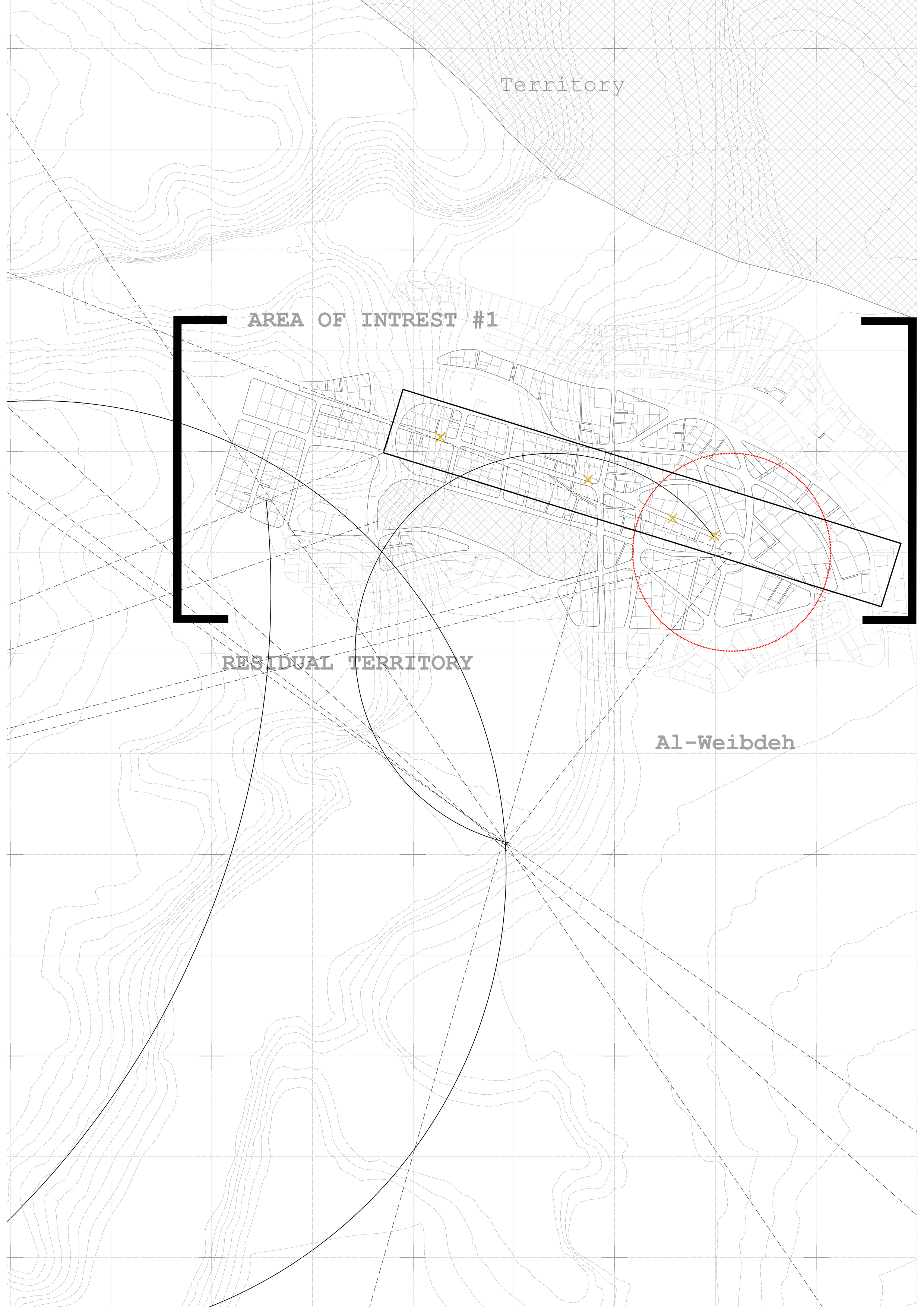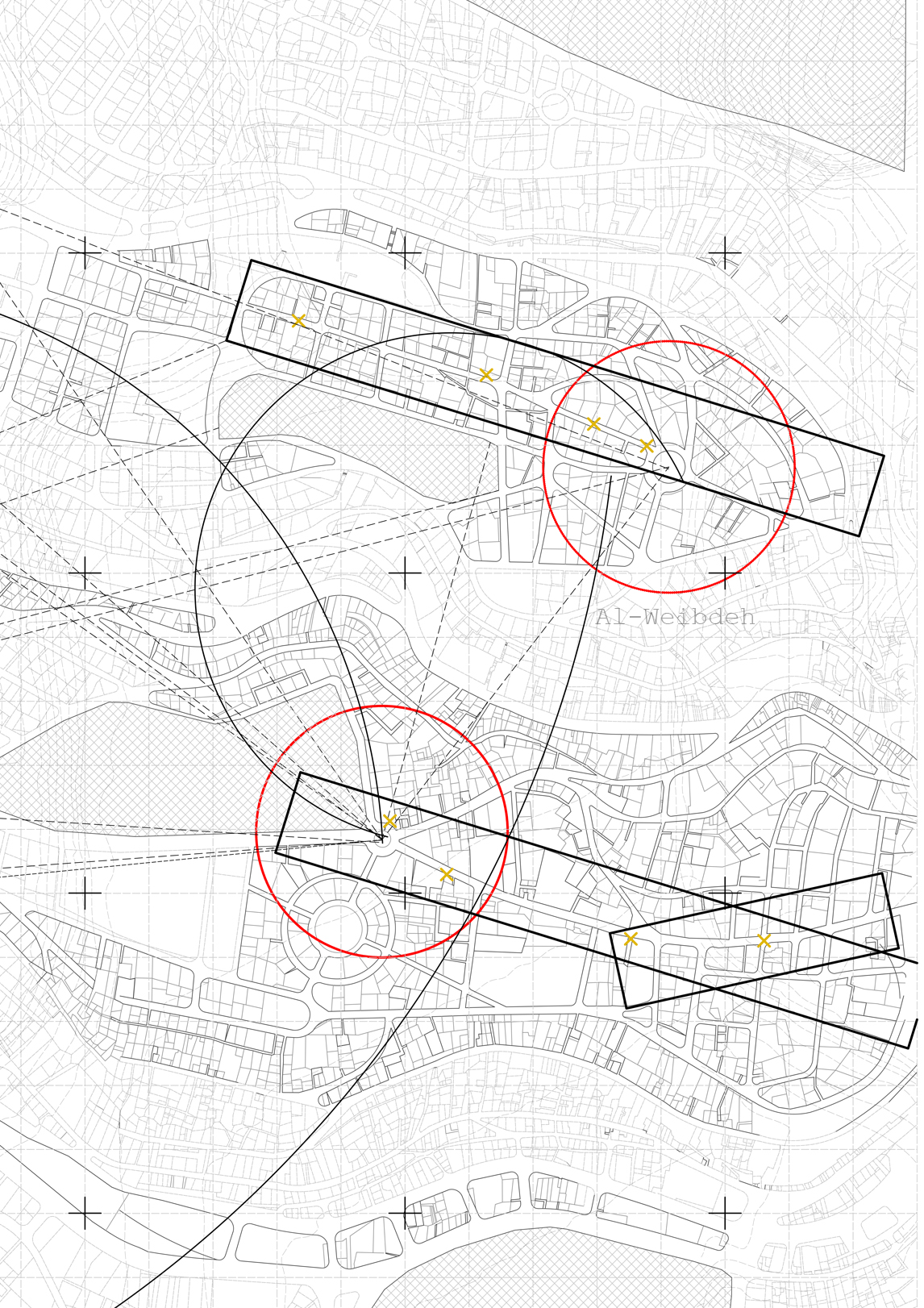RIGHT TO THE CITY
A new reading to an urban landscape
Amman, Jordan
This reading uses a theoratical approach to question, ponder, and envision new dimensions to an urban landscape.
How do we gain the right to the city if we don’t understand how to occupy it?
How do we occupy the city and develop a sense of belonging to an ever-changing urban community without knowing how to perceive it?
A new architectural reading is akin to representing a disjunctive contemporary city and a tool to understanding new ways in occupying it. The right to the city correlates with understanding it in an alternative paradigm. A paradigm which consists of fragmented and heterogeneous parts, irregular and complex territories that have led to an urban fabric which is ambiguous and uncontrolled.
Contemporary Amman has developed an unconscious random growth, which gives rise to seemingly idiosyncratic territories that have resulted in a shift to its functionality and meaning. Amman has become a metropolitan laboratory in which trials of social groups have altered and re-established the existing formality of the city. It is under continuous pressure to morph itself out of its original context and create a new urban memory linked to the social imagination of its versatile inhabitants.
The metropolitan city has become an urban workshop for the invention and testing of a revolutionary lifestyle, which has obliviously led to a culture of congestion. The constant temptation in imitating the characteristics of both an alienated architecture [an architecture dealt with the social typologies] and the eccentric stylistic features of an early Amman has resulted in the formation of unresolved urban interiorities.
Every city is forced to mutate and go against its nature in order to compensate and manage the social, economic, and political growth that is vigorously revolving in a fast and constant pace.
Not to mention the inhabitant factor that physically occupies this domain. Hence, the city is a morphological entity that works in a super natural way on its own. In the end, in order to understand this phenomenon, a new reading to the city [maps, photographs, and texts] is required to allow the imaginative understanding to inhabiting an enigmatic urban landscape.
A new reading to an urban landscape
Amman, Jordan
This reading uses a theoratical approach to question, ponder, and envision new dimensions to an urban landscape.
How do we gain the right to the city if we don’t understand how to occupy it?
How do we occupy the city and develop a sense of belonging to an ever-changing urban community without knowing how to perceive it?
A new architectural reading is akin to representing a disjunctive contemporary city and a tool to understanding new ways in occupying it. The right to the city correlates with understanding it in an alternative paradigm. A paradigm which consists of fragmented and heterogeneous parts, irregular and complex territories that have led to an urban fabric which is ambiguous and uncontrolled.
Contemporary Amman has developed an unconscious random growth, which gives rise to seemingly idiosyncratic territories that have resulted in a shift to its functionality and meaning. Amman has become a metropolitan laboratory in which trials of social groups have altered and re-established the existing formality of the city. It is under continuous pressure to morph itself out of its original context and create a new urban memory linked to the social imagination of its versatile inhabitants.
The metropolitan city has become an urban workshop for the invention and testing of a revolutionary lifestyle, which has obliviously led to a culture of congestion. The constant temptation in imitating the characteristics of both an alienated architecture [an architecture dealt with the social typologies] and the eccentric stylistic features of an early Amman has resulted in the formation of unresolved urban interiorities.
Every city is forced to mutate and go against its nature in order to compensate and manage the social, economic, and political growth that is vigorously revolving in a fast and constant pace.
Not to mention the inhabitant factor that physically occupies this domain. Hence, the city is a morphological entity that works in a super natural way on its own. In the end, in order to understand this phenomenon, a new reading to the city [maps, photographs, and texts] is required to allow the imaginative understanding to inhabiting an enigmatic urban landscape.




